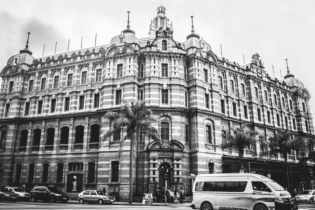 Newly appointed Minister of Transport, Joe Maswanganyi has said that the R4.5 billion Moloto Road project by the South African National Roads Agency Limited (SANRAL) will not only help scale down fatalities on the notorious Moloto Road, but will also help rejuvenate the South African economy.
Newly appointed Minister of Transport, Joe Maswanganyi has said that the R4.5 billion Moloto Road project by the South African National Roads Agency Limited (SANRAL) will not only help scale down fatalities on the notorious Moloto Road, but will also help rejuvenate the South African economy.
The five-year-period Moloto Road project, forms part of the programme coordinated by the Presidential Infrastructure Coordinating Commission, which identified eighteen strategic infrastructure projects (SIPs).
“It is part of SIP1, which is designed to unlock the northern mineral belt with the Waterberg as the catalyst. It will include the development of a logistics corridor to connect Gauteng with Mpumalanga and Limpopo,” said Maswanganyi.
The minister said, apart from boosting the Waterberg mineral belt, SIP1 will also boost local economies along the Moloto Road – notably, the Sekhukhune District in Limpopo and Dr JS Moroka and Thembisile Hani municipalities in the Nkangala District Municipality in Mpumalanga.
Road development and construction of corridor
The road agency has started with a wide range of interventions on the corridor in terms of road maintenance that include, the repair of dangerous wash-aways in the Moteti area in Limpopo, opening and clearing of storm water pipes and culverts, repairing gravel shoulders and repairing road signs and markings.
The construction and maintenance of the corridor will have a positive impact on the region, by developing the R573 road that connects Gauteng, Mpumalanga and Limpopo at no usage cost to commuters. The no toll road will make it cheaper for cargo and commuters to travel, while smoothing out traffic significantly.
Job creation and infrastructure
Already an estimated total of 12 500 jobs will be created in the three provinces joined by the Moloto road.
Of the current construction contracts, 20% of the contract value is set aside for SMMEs of CIDB grading 1 to 6. These SMMEs will be procured during the construction period.
SANRAL has also advertised and appointed two construction companies on the Limpopo and Mpumalanga sides of the road construction efforts.
The Moloto Development Corridor will include investment in passenger rail services that will offer commuters a safer, faster and more accessible connection between the three provinces.
The rail system is designed to form the backbone of both the public transport system and the corridor development process by making the rail stations and transfer facilities the centre points for nodal developments.
All commuters and the non-commuting public will use the rail facilities around the station and the node in general as the basis and position for all commercial and other economic activities along the corridor.
The aim is that commuters must support local trade to uplift the local economy.
 Newly appointed Minister of Transport, Joe Maswanganyi has said that the R4.5 billion Moloto Road project by the South African National Roads Agency Limited (SANRAL) will not only help scale down fatalities on the notorious Moloto Road, but will also help rejuvenate the South African economy.
Newly appointed Minister of Transport, Joe Maswanganyi has said that the R4.5 billion Moloto Road project by the South African National Roads Agency Limited (SANRAL) will not only help scale down fatalities on the notorious Moloto Road, but will also help rejuvenate the South African economy.







